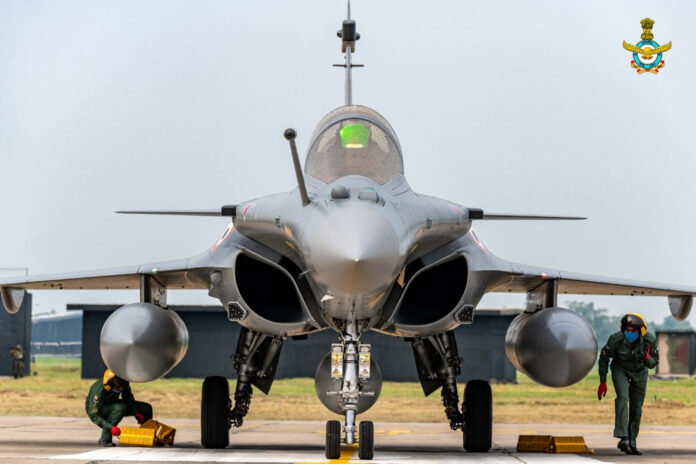Eric Trappier, Chairman and CEO of French aerospace company Dassault Aviation, the manufacturer of the 4.5-generation Rafale fighter jet, has, for the first time, addressed reports of the Indian Air Force (IAF) losing a Rafale via Pakistan Air Force during Operation Sindoor, as claimed by the latter.
In an interview with a French publication, Trappier stated that one thing is certain: Pakistan’s claim of having shot down three Rafale jets is inaccurate. He added that the Indian side has not shared any official communication regarding the incident, leaving the exact details unclear. However, he asserted Pakistani claims as inaccurate.
Commenting on the Rafale’s capabilities, Dassault Aviation CEO Eric Trappier noted that while it’s difficult to claim outright superiority, he believes the Rafale excels across multiple dimensions. He acknowledged that it may face limitations in a head-on encounter with an F-22, but emphasised that the Rafale’s true strength lies in its versatility.
Designed for a wide range of missions, air-to-air combat, reconnaissance, precision ground strikes, nuclear deterrence, and carrier operations, the Rafale, in his view, is the most capable combat aircraft globally. Trappier described it as superior to the F-35 and well ahead of any Chinese-made fighters, making it the ideal choice for both the French armed forces and international customers.
Background
In response to the deadly terror attack in Pahalgam on April 22, which claimed the lives of multiple Indian security personnel, India launched a series of precision airstrikes under ‘Operation Sindoor.’ These strikes targeted known terror camps and launchpads across the Line of Control (LoC) in Pakistan-occupied Kashmir (PoK) and deeper into Pakistani territory. According to Indian defence sources, the operation was aimed at dismantling the infrastructure used by groups responsible for cross-border terrorism, signalling a strong and calibrated retaliation.
In the wake of the strikes, Pakistan’s Defence Minister Khawaja Muhammad Asif made dramatic claims during a late-night press conference. He asserted that Pakistani air defences had successfully shot down five Indian fighter aircraft, including three Rafale jets, a Sukhoi Su-30, and a MiG-29, and that several Indian soldiers had been captured. However, he declined to provide any verifiable evidence or exact figures, raising immediate questions about the credibility of his statement.
As international observers and defence analysts scrutinised these claims, it became evident that Pakistan’s narrative was being aggressively pushed through an orchestrated disinformation campaign. Senior Pakistani officials, including ministers and military spokespersons, circulated doctored images, outdated footage, and even clips from video game simulations as supposed “proof” of Indian aircraft being shot down. One such instance involved the sharing of a clip from the video game ARMA 3, falsely presented as real combat footage of a downed Indian fighter jet. Another senior official shared a shaky mobile recording of a distant explosion, calling it “conclusive evidence” of a successful air defence operation, despite the video lacking any identifiable aircraft or verifiable metadata.
Disinformation Blitz
The disinformation blitz extended across social media platforms, where pro-establishment Pakistani accounts amplified unverified claims, often citing anonymous Telegram channels and WhatsApp forwards as sources. Pakistani state media also aired speculative reports, relying on social media chatter rather than on-ground verification. The narrative was further muddied by doctored radio communications and AI-generated images being presented as “leaked” IAF internal chatter and cockpit visuals.
In contrast, the Indian government maintained relative operational silence, refusing to engage with Pakistan’s narrative warfare. However, independent satellite imagery reviewed by global open-source intelligence (OSINT) groups showed clear damage at suspected terror infrastructure sites in PoK, lending weight to the success of India’s operation.
The contrast between India’s operational opacity and Pakistan’s theatrical overstatement highlighted a familiar pattern: while New Delhi focused on strategic messaging and targeted impact, Islamabad appeared more invested in shaping perception, regardless of verifiability. As analysts pointed out, this wasn’t the first time Pakistani officials had relied on fantasy to bolster battlefield credibility, echoing similar disinformation tactics seen after the Balakot airstrikes in 2019.



